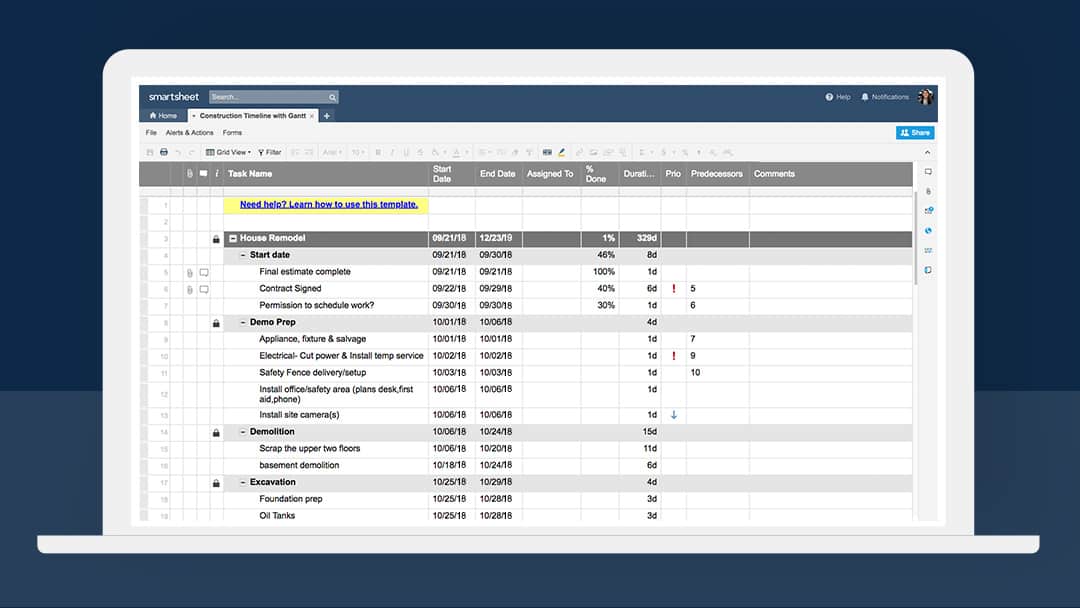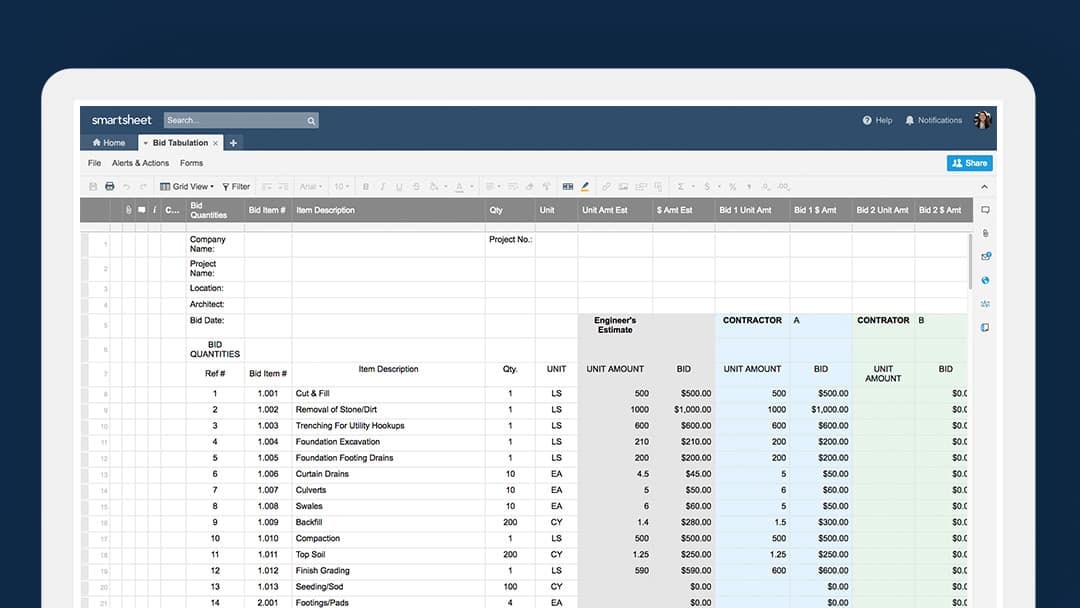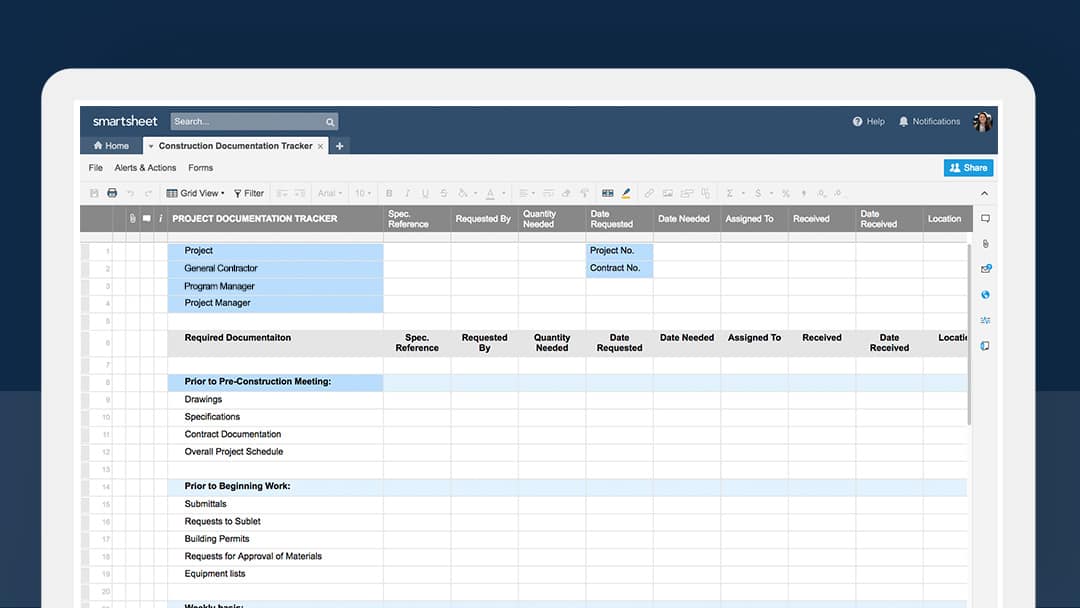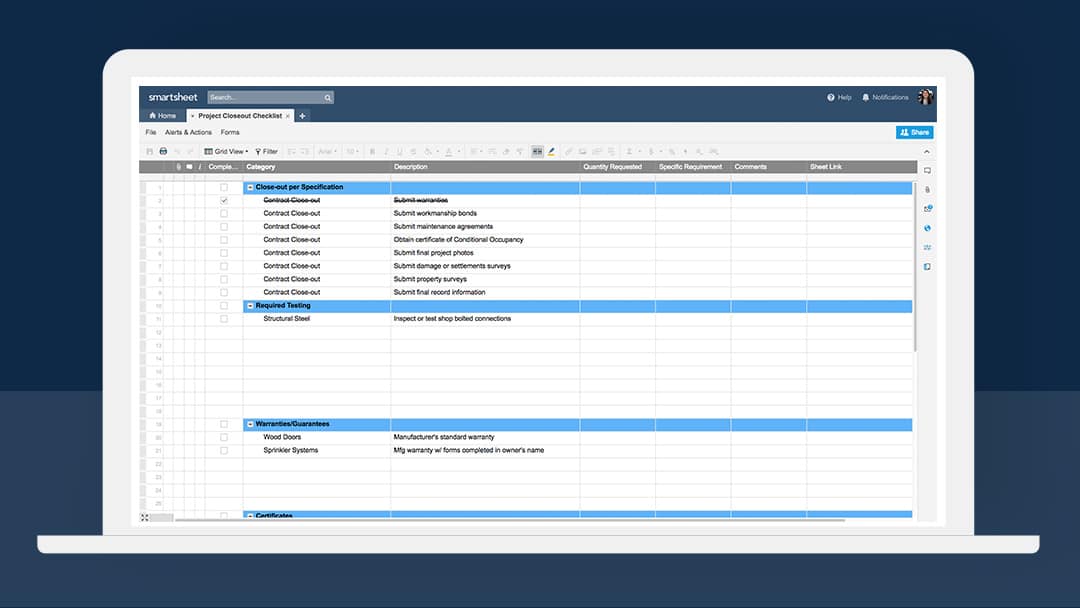Whether you're renovating or adding to an existing location, or constructing an entirely new one, properly planning for a construction project is a tremendous undertaking. Even the most experienced program managers struggle with setting proper expectations for construction projects given the unforeseen hiccups that can occur.
There’s no way to be 100 percent prepared for the realities of a construction project. Contractors may encounter changes in site conditions and need to adjust plans, or there might be sudden shortages in important building materials.
But that shouldn’t stop owners from making their plan as watertight as possible, and using a reliable software platform, such as Smartsheet, to help them execute.
Ensure you and your contractors are hitting your targeted budget by dividing the process into these four key phases.
Phase 1: Analysis and discovery
Start by assembling your team, as it takes more than one person to plan a budget. The makeup of your construction team depends on your company’s size and structure. It might include the owner of your business or members of a board-appointed committee.
An understanding of your company’s overall cost structure is critical, so ensure at least one member of the team is trusted by the CFO to adequately represent that point of view. Your funding for the project should be secure and well-established.
Construction projects are expensive, so being prepared to withstand overruns without breaking the bank is essential. Research and analyze the goals and requirements that you have for this project. Know the what and why of your build before you start on the how. Once you have all of that planned out, start on the specifics. Evaluate the site conditions and any existing documentation.
Related
What is critical path and how does it help me?
Assess your project resources and limitations; know your realistic limits so you can work within them. Lastly, be aware of specific safety and code requirements, and any permits you’ll need to proceed.
To begin planning, consider using the Construction Budget and Construction Timeline templates in Smartsheet to build a more accurate budget.
Phase 2: Design and development
During this phase, you need to determine the potential scope of your project. The first step is to meet with your architects and design consultants to draw on their expertise as needed.
After you analyze your potential work, ask consultants to come up with creative options and pitch them with drawings or models. It’s critical for all stakeholders and decision makers to be aligned on the final design before you get started.
Once there’s sign off, create a list of required materials, and don’t hesitate to seek help from outside consultants for second opinions. Most of us don’t have any idea what goes into the buildings we spend most of our days in, nor how much they could possibly cost.
Having an experienced engineer provide an estimate for the overall project will enable you to evaluate bids from multiple contractors when it comes time to choose one.
At the end of this phase, finalize your budget and timeline and start seeking bids from potential contractors. When doing so, ensure that contractors have completed all requirements for the bid.
Related
4 tips to accelerate adoption of SaaS
Some owners put software requirements in their bids to ensure they are using the same platforms as their contractors. Platforms that are accessible through mobile devices ensure they receive consistent communication through the duration of the project.
This minimizes time spent waiting for contractors to produce necessary items such as construction bonds or proof of insurance. The Abstract of Bids template is a useful way to neatly check off these requirements. Also, consider using templates for Construction Estimation and Bid Tabulation as helpful, powerful tools.
Phase 3: Documentation and pre-construction
Once you power through the design and development phase, you will need to secure approval of the final design and budget. Whether the final sign-off comes from your boss or the buck stops with you, ensure decision makers understand the project and are prepared to move forward with it.
Before breaking ground, have a meeting with all stakeholders (contractors, architects, utilities, etc.) to discuss the project, assess any potential issues, and work to resolve them. This will reduce risk from the start and help keep your project budget and timeline more firmly on track.
Related
5 strategies of a successful construction project manager
Keep all documentation for permits, regulations, deliverables, and contracts in an organized location. Prepare and submit all necessary paperwork, ensuring you give yourself a healthy head start before you actually need them. Few things are more frustrating than being unable to start work because your permits haven’t been cleared.
When managing your pre-construction, everything should be properly documented and tracked. Visit the site frequently during demolition and pre-construction to ensure everything is proceeding smoothly and according to your planned schedule.
Use tools like our Construction Documentation Tracker, Subcontractor Documentation Tracker, and Daily/Weekly Site Inspection Report to keep track of work being done, so there are no questions or uncertainties when resolving matters with a contractor.
Phase 4: Construction and closeout
Actually building and closing out contracts will almost certainly be the longest phase of the project. Monitor the build and ensure progress is keeping as close to your projected schedules and costs as possible.
Even the best-laid plans will encounter hurdles. Keep a detailed change order log to ensure that when changes need to be made, they’re tracked and noted for the future. Identify problem spots ahead of time and develop workarounds.
Keep all stakeholders aligned, from contractors to utilities. Track your deliverables and any materials being used. This will help keep your contractors’ progress payments timely, accurate, and fair to the work that has been completed. Prepare punch lists, closeout checklists, warranties, and any necessary inspections.
For this final phase, use Smartsheet templates like the Time and Materials Invoice, Construction Punch List, and Project Closeout Checklist to help you manage those steps.
Undertaking a construction project is a daunting task, even for veteran contractors and program managers. Though it may be intimidating, it is possible to set a construction project up for smooth execution.
As you’ll find using our Construction and Facilities Management template set, Smartsheet can be a powerful tool for your construction projects.



